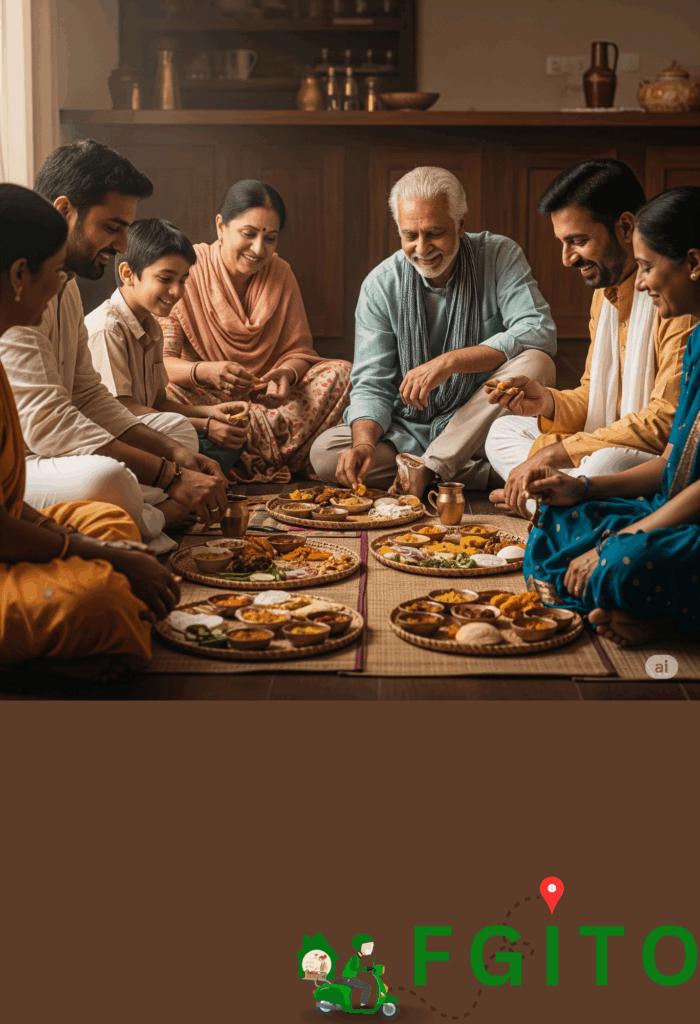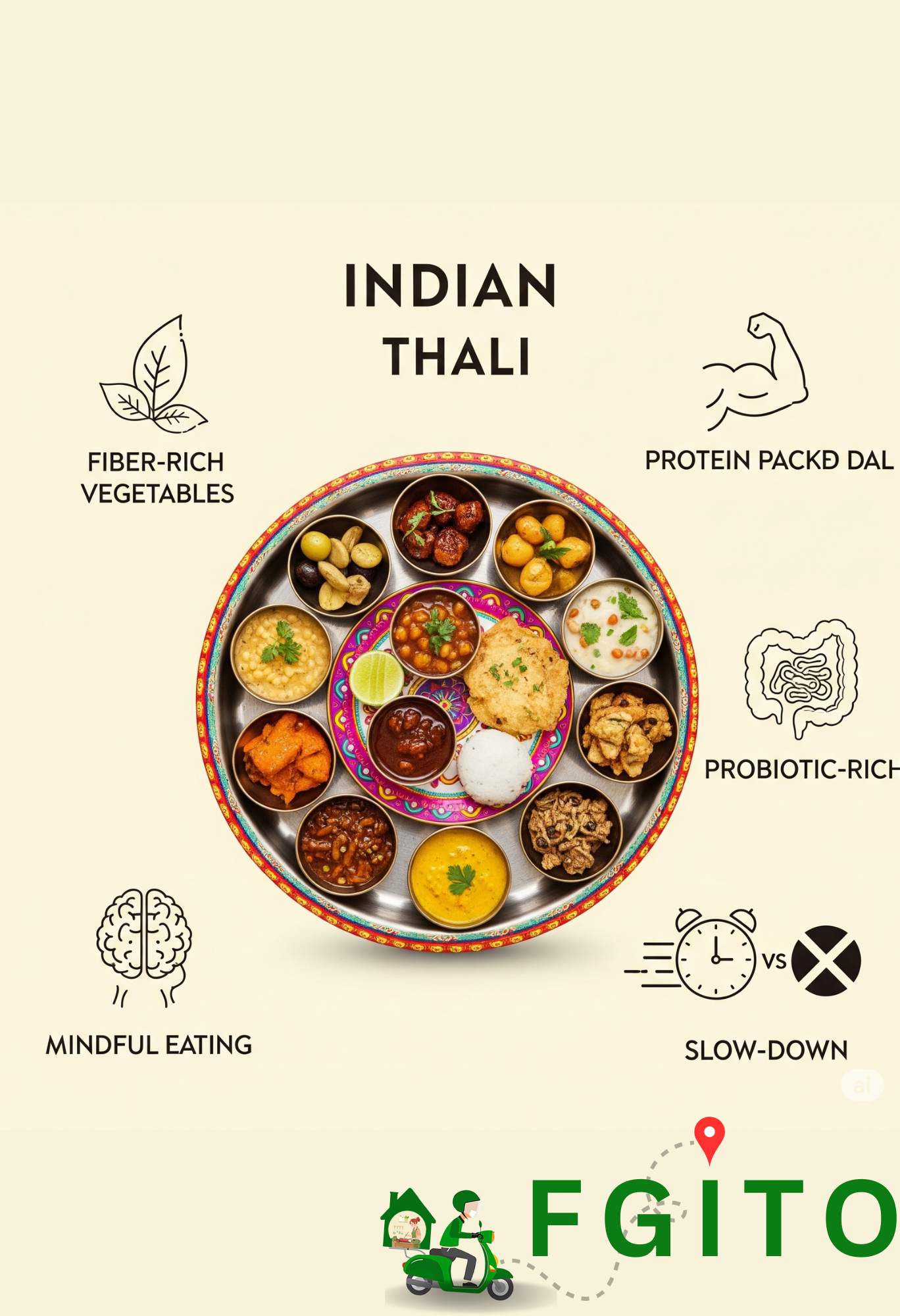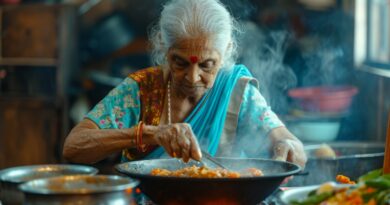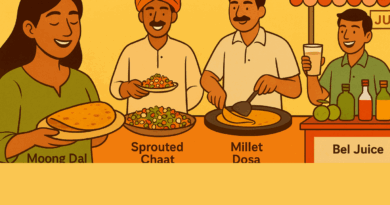The Indian Thali Benefits: More Than a Meal, It’s a Nutritional Blueprint
Ever sat down to a traditional Indian thali and thought—Why so many bowls? Why this specific combination? The answer isn’t just culture or tradition. It’s biology, balance, and brilliant design. The Indian thali, in its many regional forms, is India’s quiet way of saying, “Here’s everything your body needs—in one meal.”
At FGITO, we celebrate this harmony in food—delivering home-style Indian thalis that nourish not just your hunger but also your rhythm of life. But first, let’s break down what makes the Indian thali so timeless—and timely.

A Built-In System of Nutrition
Each element on the thali is there for a reason:
- Dal (lentils): Rich in protein and iron—especially vital for vegetarians.
- Sabzi (vegetables): Provide fiber, vitamins, minerals—and variety.
- Rice/Chapati: Carbohydrates for energy and satiety.
- Curd or Buttermilk: Natural probiotics for gut health and digestion.
- Pickle & Chutney: Small in portion but high in taste and antioxidants.
- Sweet/Dessert: A touch of sugar to satisfy cravings and balance spice levels.
This isn’t random. In fact, traditional Indian thalis often follow Ayurvedic principles—balancing the six tastes: sweet, sour, salty, bitter, pungent, and astringent. This ensures a meal that doesn’t just fill your stomach but also leaves your mind content and your body grounded.
The Psychology of the Plate
Modern diets often focus on counting calories. Although Indian thali-style eating focuses on listening to your body. Because everything is served in small portions, you’re more likely to eat mindfully. You take a bit of this, a little of that. You pause. You taste. You don’t just eat, and you engage.
In a world of oversized portions and grab-and-go meals, a thali is an invitation to slow down and reset.
Also Read: India’s Flavor U-Turn: A New Age of Indian Street Food
Diversity Within a Unified Design
A Rajasthani thali may feature gatte ki sabzi and bajra roti. Whereas a Bengali thali might include shukto, posto, and rice. Moving further down south, you’ll find sambhar, rasam, curd rice, and poriyal. Different ingredients, different climates—but the philosophy is the same: balance.
Whether it’s the mustard-spiced mustard greens in Punjab or the tempered curd rice in Tamil Nadu, Indian thalis are indeed deeply local and deeply nutritional. They’re an example of food evolving to match regional availability and bodily needs.
Why It Still Works Today
In our fast-paced lives, we often swing between overindulgence and extreme diets. However, Indian thali-style eating offers a third way: built-in balance. No food group is villainized, and no flavor is ignored.
And the best part? You don’t need to cook five dishes to eat like this. Even two to three thoughtfully combined elements—a dal, sabzi, and curd rice—can deliver the same benefits in a simplified form.
What FGITO Believes In
At FGITO, we don’t serve just meals—we serve the essence of mindful eating. Even our carefully curated thali-style meals are inspired by the way Indian homes nourish their families—simple, warm, and complete.
Whether you’re ordering from Noida or Lucknow, our goal is to bring you back to what food was always meant to be: balanced, comforting, and connected to your roots.
Final Bite
The Indian thali isn’t a trend—it’s a timeless template for how to eat well. So, the next time you open your FGITO tiffin and see a little of everything, know this: your body will thank you for the variety, and your gut will smile at the balance.
Because in India, we don’t just eat. We build wellness—one plate at a time.




